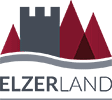"Am Mayener Kreuzchen" Kapelle in Ettringen
Ettringen
The small chapel is located - coming from the direction of Mayen - directly at the entrance to the village of Ettringen on the left side. It was built in 1896 on the spot where a stone cross had previously stood - the Mayener Kreuzchen, as the people of Ettringen call it.
In 1894, the married couple Matthias Weidenbach commissioned the master mason Johann Krämer from Ettringen to build the little chapel on their property. In the summer of 1895 it was decorated by Antreichermeister Mathias Lanz, also from Ettringen. On Palm Sunday, March 29, 1896, the dedication took place.
The neo-Gothic chapel, made of local basalt, shows the figure of St. Mary above the entrance and St. Joseph with the infant Jesus in his arms on the outside in the Gothic side niche.
The chapel is still maintained and cared for by the descendants of the Weidenbach family. Thus, in 2015, an extensive renovation of the chapel took place.











